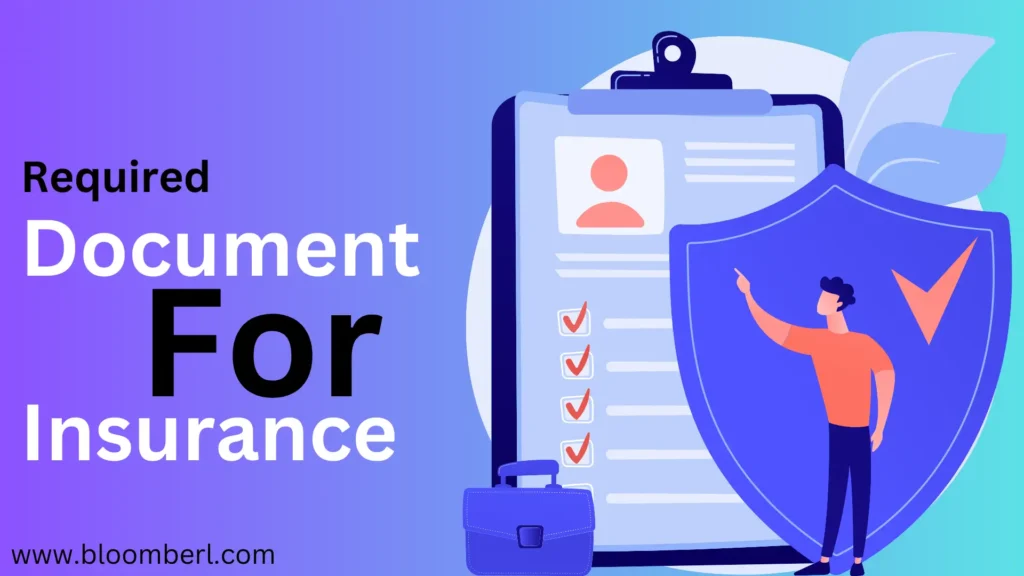Equipment Finance Insurance

In the dynamic landscape of business operations, the strategic acquisition of equipment plays a pivotal role in enhancing productivity and maintaining a competitive edge. However, the financial commitment associated with procuring high-value machinery or specialized tools can pose a significant challenge for enterprises, both large and small.
This is where Equipment Finance Insurance steps in as a key facilitator, providing a robust financial safety net for businesses investing in essential equipment. Offering a shield against unforeseen risks such as equipment damage, breakdowns, or even market fluctuations, Equipment Finance Insurance ensures that organizations can navigate the complexities of equipment financing with confidence, fostering a conducive environment for sustainable growth.
At its core, equipment finance insurance serves as a safeguard, mitigating financial risks and uncertainties that could otherwise impede the seamless functioning of businesses heavily reliant on specialized equipment. This comprehensive insurance solution goes beyond conventional coverage, addressing not only potential physical damage but also the financial implications of equipment downtime.
By aligning with the specific needs of diverse industries, Equipment Finance Insurance becomes an indispensable partner in the journey of businesses striving for operational excellence, offering peace of mind and enabling strategic decision-making in an ever-evolving economic landscape. In essence, it transforms the acquisition of vital equipment from a financial challenge into a strategic advantage, empowering enterprises to innovate and thrive in their respective markets.
Equipment insurance is an essential aspect of equipment financing that helps protect the financial interests of both the lender and the borrower. It involves getting insurance coverage for the financed equipment to mitigate potential risks and losses. Here’s everything you need to know about equipment insurance as it relates to equipment financing:
What Is Equipment Finance Insurance?
Equipment Finance Insurance is a specialised financial safeguard that plays a pivotal role in mitigating risks associated with equipment acquisition and financing. It serves as a protective shield for both lenders and borrowers, offering comprehensive coverage against potential losses due to equipment damage, breakdowns, or market fluctuations.

This insurance goes beyond conventional policies, addressing not only the physical integrity of the equipment but also the financial implications of operational disruptions. By providing a robust safety net, Equipment Finance Insurance ensures that businesses can confidently invest in crucial equipment, fostering a secure environment for sustained growth and operational excellence.
It acts as a strategic enabler, allowing enterprises to navigate the complexities of equipment financing with confidence, unlocking the full potential of their investments in an ever-evolving business landscape.
Different Types Of Equipment Finance Insurance
Asset Protection Insurance
Asset Protection Insurance is a specialized financial safeguard designed to shield businesses from potential financial losses associated with damage, theft, or loss of valuable assets, particularly those acquired through financing.
Equipment Breakdown Insurance
Equipment Breakdown Insurance underlines the importance of Equipment Finance Insurance by specifically addressing the financial consequences of machinery breakdowns. It covers repair or replacement costs, emphasising the critical role this insurance plays in maintaining operational continuity and protecting businesses from unexpected disruptions.
Loss Of Income Insurance
Loss of Income Insurance, a crucial facet of Equipment Finance Insurance, steps in to mitigate the financial impact of equipment-related interruptions. This coverage ensures that businesses continue to receive income during periods of downtime, underscoring its significance in sustaining financial health amid unforeseen setbacks.
Maintenance Insurance
Maintenance Insurance focuses on preventative measures within the Equipment Finance Insurance framework, covering the costs associated with routine upkeep and servicing. By addressing maintenance expenses, this type of insurance aids businesses in optimizing equipment performance and longevity.
Gap Insurance
In the context of equipment finance insurance, gap insurance addresses the disparity between the actual cash value of the equipment and the outstanding loan balance. This coverage minimizes financial gaps, ensuring that businesses can settle their financial obligations even in the event of a total loss.
Lease-End Insurance
Lease-End Insurance within the spectrum of Equipment Finance Insurance safeguards lessees by covering potential fees or damages at the conclusion of an equipment lease. This ensures a smooth and financially secure transition at the end of the leasing term.
Credit Life Insurance
Credit life Insurance, a vital component of equipment finance insurance, offers coverage for outstanding equipment loans in the unfortunate event of the borrower’s death. By doing so, it guarantees the fulfillment of financial obligations, reflecting its role in securing the financial future of businesses.
Business Interruption Insurance
Business Interruption Insurance within Equipment Finance Insurance addresses the financial repercussions of equipment-related disruptions. It ensures businesses receive compensation for lost income during downtimes, emphasizing its role in sustaining financial resilience amid unforeseen challenges.
Extended Warranty Insurance
Extended Warranty Insurance, integral to Equipment Finance Insurance, extends protection beyond the manufacturer’s warranty period. This coverage minimizes the financial burden of repair or replacement costs, emphasizing its role in maximizing the lifespan and value of financed equipment.
Renters Insurance
While not exclusively tied to equipment, renters insurance covers personal property within a rented space, encompassing any financed equipment. This type of insurance provides protection against risks such as theft or damage, contributing to the overall risk management strategy within Equipment Finance Insurance.
Liability Insurance
Liability insurance within the Equipment Finance Insurance context safeguards businesses from potential legal and financial liabilities arising from the use of financed equipment. It provides a crucial layer of protection against third-party claims, enhancing the overall risk management framework.
Property Insurance
Property Insurance in the domain of Equipment Finance Insurance extends coverage to the physical assets themselves, ensuring protection against a range of perils such as fire, natural disasters, or vandalism. This type of insurance reinforces the financial resilience of businesses by preserving the value of their tangible assets.
Equipment physical damage programs
These programs focus on safeguarding against various forms of physical damage that equipment may encounter during its operational lifespan, including accidents, collisions, or natural disasters. By securing coverage under Equipment Physical Damage Programs, businesses ensure the preservation of the monetary value of their vital machinery or specialized tools, reinforcing financial stability and facilitating a proactive approach to risk management within the realm of equipment financing.
Commercial Vehicle Program
A Commercial Vehicle Program is a comprehensive insurance offering tailored to businesses relying on a fleet of vehicles for their operations. This specialized insurance initiative is crucial in mitigating the unique risks associated with commercial vehicles, including trucks, vans, and other company-owned transport assets.
Risk Management Programs for Lease Portfolios
Risk Management Programs for Lease Portfolios are strategic initiatives designed to proactively identify, assess, and mitigate potential risks associated with leasing activities. These programs are integral for businesses engaged in leasing assets, such as equipment or real estate, as they provide a structured framework to analyze and address diverse risks.
What documentation is required?

To obtain equipment finance insurance, (if not automatically provided by the lessor/lender), you will typically need to provide the following information to the insurer:
- Your business details
- Details of the equipment being financed or leased, including its intended location and usage, and any serial/registration numbers.
- Copy of the finance/lease agreement, clearing showing the contract number.
- The odometer (mileage) reading indicates if a vehicle is being leased or financed.
- Value of the equipment.
- Start and end dates of the agreement.
Once insurance has been purchased, the insurer must send a copy of the certificate of insurance to the lessor/lender. Make sure the lessor/lender’s business name is also on the insurance documents (ex: Global Bank & Trust), and they are included as a beneficiary.
Purpose of Equipment Insurance

Financial Safeguard
Equipment Finance Insurance serves as a protective shield, mitigating financial risks associated with the acquisition and use of high-value equipment.
Asset Preservation
The primary purpose is to preserve the monetary value of financed equipment by providing coverage against potential damages, theft, or losses.
Operational Continuity
Ensures the seamless operation of businesses by addressing the financial implications of equipment breakdowns, disruptions, or unexpected events.
Risk Mitigation
Acts as a risk management tool, identifying and minimizing uncertainties related to equipment financing, promoting stability and confidence in business operations.
Strategic Decision Support
Enables businesses to make informed and strategic decisions regarding equipment investments, knowing that potential risks are covered.
Financial Resilience
Enhances the financial resilience of businesses by providing a safety net against unforeseen circumstances, contributing to long-term sustainability.
Customized Coverage
Offers flexibility with various insurance types, allowing businesses to tailor coverage based on the specific needs and nature of their financed equipment.
Market Adaptability
Helps businesses adapt to market fluctuations and changes by providing a financial buffer against economic uncertainties that could impact equipment value and usage.
Legal And Regulatory Compliance
Ensures businesses adhere to legal and regulatory requirements related to equipment financing, providing a comprehensive and compliant insurance framework.
Investment Optimization
Maximizes the return on investment in equipment by minimizing the financial impact of unforeseen events, enabling businesses to focus on growth and profitability.
Insurance Coverage Considerations
Coverage Limits
In the realm of equipment finance insurance, careful consideration of coverage limits is paramount for businesses looking to safeguard their valuable assets. Establishing appropriate coverage limits ensures that the financial protection extended by the insurance aligns with the value of the financed equipment.
Striking the right balance in coverage limits is integral to optimizing the scope of protection while managing premium costs effectively. By thoroughly assessing the potential risks and evaluating the monetary implications of equipment-related incidents, businesses can tailor coverage limits to create a robust and cost-effective insurance plan under the overarching umbrella of Equipment Finance Insurance.
Deductibles
Within the context of equipment finance insurance, choosing deductible amounts becomes a strategic decision for businesses seeking a tailored risk management approach. Balancing deductible amounts with premium costs is essential to optimizing the financial impact of a claim while ensuring the affordability of the insurance policy.
Businesses must align deductible choices with their risk tolerance and financial capacity, considering the potential costs associated with equipment damage or loss. By navigating deductible options judiciously, enterprises can fine-tune their Equipment Finance Insurance policies to meet both their risk mitigation objectives and budgetary constraints.
Exclusions And Limitations
Understanding the exclusions and limitations within equipment finance insurance policies is paramount for businesses navigating the complexities of risk management. By scrutinizing these aspects, organizations can identify potential gaps in coverage and implement supplementary risk mitigation strategies.
Awareness of specific risks or circumstances excluded from coverage ensures that businesses can take proactive measures to address vulnerabilities, fostering a comprehensive risk management approach within the realm of equipment finance insurance.
Additional Insured
In the collaborative landscape of equipment financing, incorporating additional insured parties into the insurance policy becomes a strategic consideration. Extending coverage to entities beyond the primary policyholder enhances risk-sharing mechanisms and strengthens partnerships.
This inclusive approach aligns seamlessly with the principles of Equipment Finance Insurance, promoting collective risk mitigation and reinforcing the resilience of all stakeholders involved in equipment-related business endeavors. By including additional insured entities, businesses can cultivate a collaborative risk management strategy that ensures comprehensive protection throughout the lifecycle of the financed equipment.
Insurance Provider Selection
Insurance Expertise
When delving into the realm of Equipment Finance Insurance, meticulous attention to insurance provider selection is imperative for businesses seeking comprehensive coverage.
Opting for a reputable and experienced insurance provider ensures that the unique nuances of equipment financing are well-understood and addressed. A provider well-versed in Equipment Finance Insurance is equipped to tailor policies that align with the specific needs of businesses relying on financed equipment. This strategic alignment between the insurer’s expertise and the intricacies of equipment financing establishes a foundation for robust risk management and financial security.
Insurance Expertise
In the complex landscape of equipment financing, the significance of insurance expertise cannot be overstated. Choosing an insurer with a profound understanding of Equipment Finance Insurance is crucial for businesses navigating the intricacies of coverage.
An insurance expert in this domain possesses the knowledge to accurately assess risk factors associated with financed equipment, offering tailored solutions that optimize protection and align with the unique challenges of equipment financing. Leveraging the expertise of such insurers ensures that businesses receive comprehensive coverage that goes beyond generic policies, promoting a proactive and informed approach to risk management.
Competitive Quotes
Obtaining competitive quotes is a pivotal step in securing cost-effective and robust Equipment Finance Insurance. Reputable insurers proficient in this niche understand the economic dynamics of equipment financing and can provide quotes that strike a balance between affordability and comprehensive coverage.
Businesses should seek quotes from multiple providers to compare terms, ensuring that the selected insurance aligns with their budgetary considerations while meeting the specific risk mitigation goals associated with financed equipment.
Review Policy Terms

Before committing to Equipment Finance Insurance, a thorough review of policy terms is paramount. Businesses must scrutinize the details of coverage, exclusions, and limitations to ensure alignment with their unique equipment financing needs.
This careful examination of policy terms guarantees that the insurance selected comprehensively addresses potential risks and aligns with the financial interests of the business. By paying meticulous attention to the specifics of the policy, businesses can make informed decisions that contribute to a robust risk management strategy within the realm of equipment financing.






